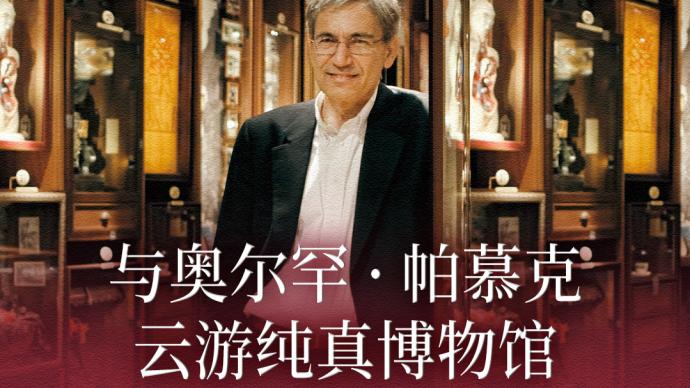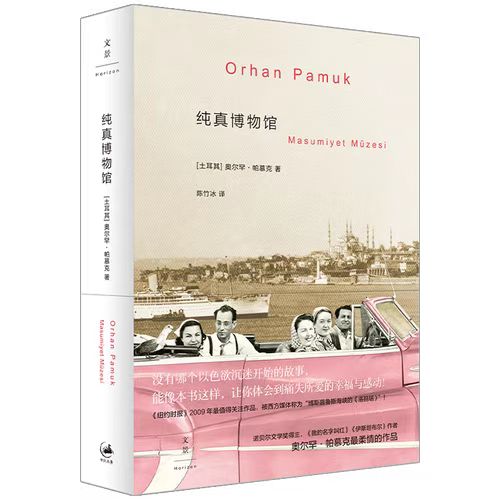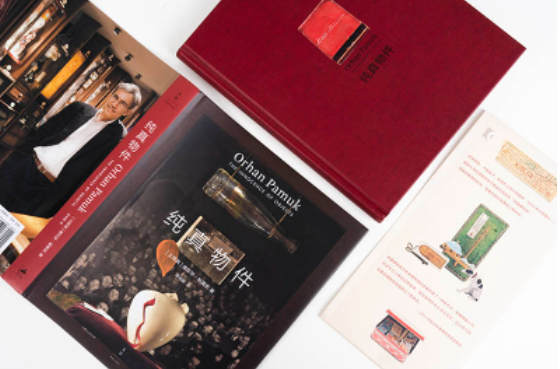
Video courtesy of Century Wenjing (38:45)
May 18th is International Museum Day. Day after day, many museums, exhibition halls and art galleries are temporarily closed. But at this special moment, the Turkish writer Orhan Pamuk, winner of the Nobel Prize for Literature, was invited by Century Wenjing to record a special video program for Chinese readers, inviting everyone to visit the Museum of Innocence in Istanbul. Let us follow Pamuk into his whimsical world. 
Opened in 2012, the Museum of Innocence is a physical version of the museum specially built by Pamuk for the book "Museum of Innocence", where you can find everything in the book.

The exterior of the Museum of Innocence
"The Museum of Innocence" is a novel published immediately after Pamuk won the Nobel Prize in 2006. The story is set in the spring of 1975. The 30-year-old Istanbul rich boy Kemal and the famous socialite Sibel were engaged first, but unexpectedly met Fu Song, a distant cousin from a poor family. After the two people's fiery love, Kemal finally broke off the engagement with Sibel, only to find that Fusong had already left him. Kemal followed the shadows and ghosts of girls and went deep into another Istanbul. He collected everything his lover touched: salt shakers, puppy decorations, thimbles, pens, hair cards, ashtrays, earrings, playing cards, keys, fans, Perfume bottles, handkerchiefs, brooches..., as well as 4213 cigarette butts, collect them in his "Museum of Innocence".Pamuk said: "When I wrote the novel The Museum of Innocence, I thought about the museum; when I built the museum, I thought about the novel. This museum was not a whim after the novel was well received, and the novel was not born out of The success of the museum."

Pamuk at the Museum of Innocence
In 2022, the Museum of Innocence has been inaugurated for ten years. How do readers or visitors feel about it? Do tourists like it here? Are museums visual representations of fiction? Which came first, the novel or the idea of the museum? Is this a piece of contemporary art by Mr. Pamuk? These questions, he personally told us the answers in the latest short film "Walking with Orhan Pamuk to the Museum of Innocence" released by Century Wenjing.Pamuk is an avid museum lover, and no one can stop him from entering any museum in the world. The protagonist Kemal in the work visited 4,000 museums in order to find a way to collect various objects of his sweetheart. He collected information and communicated with various people in the museums. Pamuk also admitted that he is also like Kemal. Like Ernest, he goes to various museums. He loves museums and is unexplainably willing to stay in museums.
After the opening of the Museum of Innocence, Pamuk published the book "Objects of Innocence". This book can be used as a collection catalogue of the "Museum of Innocence", and it is also the site selection, design and exhibition arrangement of the museum according to the novelist's personal wishes. Work, the process manual for realizing this museum, during which Pamuk explained that while writing the novel "Museum of Innocence", he was also preparing to build a real museum of innocence. "Objects of Innocence" is a catalogue created by Pamuk for this unparalleled museum in reality. Based on the plot of "Museum of Innocence", it introduces the dazzling array of objects in the museum in the order of boxes corresponding to the chapters of the novel. Objects, the cityscape of Istanbul, and the customs and traditions of the city. The whole work is full of pictures and texts, from a glimpse of daily life to the whole picture of the whole city.

"Museum of Innocence"
As the creator, designer, and maintainer of the Museum of Innocence, Pamuk believes that this museum is not only an artistic reproduction of the novel scene, but also has its own mysterious characteristics as a museum. It contains his creativity and imagination, confirms that the way of combining literature with objects and art museums is feasible, and more importantly, it reflects the development trend and value orientation of future museums: more expression of human nature.According to Pamuk, museums and novels share similar motivations: they both exist out of a desire to preserve objects, memories, and things. In literature, large heroic epics used to dominate, but starting in the 19th century, the focus of fiction shifted from heroes, nations, and history to the everyday lives of small people. He wrote "A Humble Museum Manifesto" in "Innocent Objects", believing that museums in the future will, like novels, shift from grand narratives to smaller, more personal, and more intimate individual narratives.
In the short film released this time, Pamuk once again clarified: "When you enter the museum, you will find that the first chapter of the novel appears in the first exhibition box, and the second chapter of the novel appears in the second exhibition box, but Museum narratives have their own logic. Innocence museums are not illustrations of novels, and novels are not interpretations of museums. They are intertwined and affect each other, but they have different logics. Museums don’t tell much stories, and novels don’t Explain the objects. They are connected, but each has its own mystical side. They complement each other. Ultimately, the museum is not going to help you understand the novel. All you see is the visual world the characters are in."

"True Objects"
During the tour, Pamuk also talked about the process of building the museum, the layout of collections and showcases, the philosophy of the museum, etc. He not only allowed the audience and readers to travel to distant museums and cities, but also brought gentleness and patience to everyone. The soothing of art.Pamuk also appealed to the audience once again as he called for people to read novels in the book "The Naive and Sentimental Novelist": "Please take your children to the museum, maybe they will get bored, but in the end that Might make them museum lovers."
Wang Ling, deputy general manager of Century Wenjing and project coordinator of the "Yunyou Museum of Innocence", told The Paper: "I was the original editor of the novel "Museum of Innocence", and Century Wenjing was also the publisher of Mr. Pamuk's simplified Chinese works. Almost all of the author's works are deeply connected. In 2019, I participated in a publishing project in Istanbul, during which I visited Mr. Pamuk and also went to the Museum of Innocence. The feeling of visiting on the spot is very special. It's a different feeling. But even if you haven't read the novel, just visiting such an independent museum is a very good experience and shouldn't be missed. Recently, everyone is quarantined at home, and I discussed the possibility of traveling with Ms. Idil, the person in charge of the Museum of Innocence. She agreed very simply—yes, let's do this, and then detailed arrangements, how to do it, Mr. Pamuk also gave a full response."
Wang Ling also introduced that Pamuk's latest work "Night of the Plague" is in the editing process. The book was released in Turkey in March last year, and its Spanish, German and French versions are now available.
Related Posts

